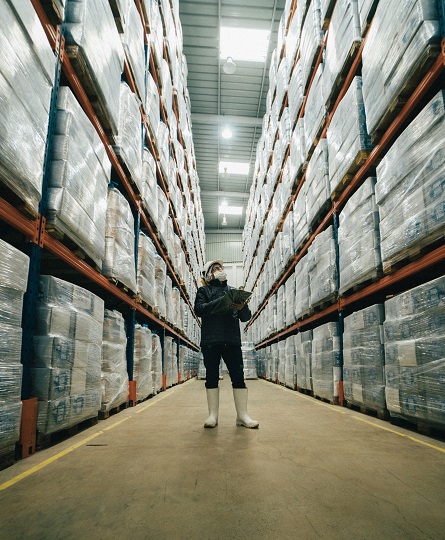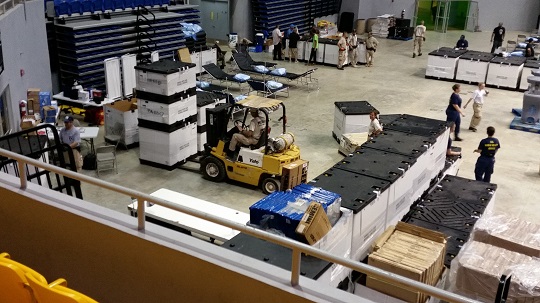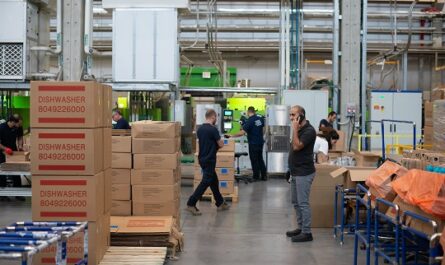In the world of logistics and warehousing, the storage of products before they are shipped to customers is a crucial aspect of the supply chain.
One common scenario involves storing products briefly in a warehouse, often on tall storage racks, with stacked cardboard boxes on pallets.
However, the stability of these stacked boxes raises a question: Should plastic wrap be used to secure them temporarily, or are there alternative options?
This post aims to explore the pros and cons of using plastic wrap, as well as alternative solutions that may provide similar security at a lower cost.
But before we delve deeper, make sure you have joined the scmguide telegram channel to receive notifications of the latest posts from this blog as well as more insights on supply chain management.
Table of Contents
The Need for Stability
Before delving into the use of plastic wrap, it’s essential to understand the importance of maintaining stable stacks of products in a warehouse.
Unstable stacks pose a significant risk, as they can collapse, resulting in damaged goods, potential injuries, and delays in delivery to customers.
Therefore, finding a reliable method to secure the stacked boxes is of utmost importance.
The Case for Plastic Wrap
Plastic wrap, commonly known as stretch film, has been widely used in the industry to stabilize stacks of products. It is a transparent plastic material that can be tightly wrapped around the boxes on pallets, holding them together securely.
The primary advantage of plastic wrap is its effectiveness in minimizing the risk of product damage during storage and transportation. It provides stability by preventing the boxes from shifting or falling off the pallets.

However, as I mentioned, plastic wrap comes with its downsides, primarily in terms of cost and sustainability.
Plastic wrap is typically single-use, meaning it is discarded and adds to the growing issue of plastic waste.
Additionally, the cost of purchasing and disposing of plastic wrap can accumulate over time, significantly impacting the overall expenses of a business.
Exploring Alternatives
Considering the drawbacks of plastic wrap, it becomes crucial to seek alternatives that can maintain the same level of security while reducing costs and promoting sustainability.
Here are a few options worth considering.
Reusable Pallet Wraps
Reusable pallet wraps, also known as pallet bands or pallet straps, can be a viable alternative.
These flexible straps are made from durable materials such as rubber or fabric and can be easily stretched around the stacked boxes, securing them tightly to the pallets.
Unlike plastic wrap, these wraps can be reused multiple times, reducing the need for frequent repurchases and minimizing plastic waste.
Reusable pallet wraps offer a cost-effective and environmentally friendly solution while maintaining the stability of the stacked boxes.
Pallet Caps and Trays
Pallet caps and trays are another alternative that can provide stability while eliminating the need for plastic wrap.
These are plastic or cardboard coverings designed to fit securely over the top of the pallet, effectively protecting the stacked boxes from shifting or falling.
Pallet caps and trays are reusable, making them a cost-effective option in the long run.
However, it’s important to ensure that the caps or trays fit snugly to prevent any movement during storage or transportation.
Pallet Strapping
Instead of using plastic wrap, some businesses opt for pallet strapping.
This method involves using strong straps, typically made of polyester or steel, to secure the stacked boxes to the pallet.
Pallet strapping offers excellent stability and can be tightened securely.
While it requires an initial investment in strapping equipment, it eliminates the need for single-use plastic wrap, making it a more sustainable option over time.
You might also like:
- Is It Time to Upgrade? Assessing the Benefits of Replacing an Aging Forklift
- From Storage to Success: The Art of Leveraging Warehousing for Strategic Gain
- Pallets in the Factory: Dedicated or General-Purpose?
Comparing the Alternatives
When evaluating the alternatives to plastic wrap, it’s crucial to consider their advantages and disadvantages in comparison.
Reusable pallet wraps offer a balance between cost and sustainability. They are cost-effective in the long run, as they can be used repeatedly and reduce the need for single-use materials. However, they may require additional training or equipment to ensure proper application.

Pallet caps and trays are reusable and provide excellent stability. They eliminate the need for wrapping altogether, simplifying the process. However, finding the right size and fit for various pallet configurations can be a challenge.
Pallet strapping provides robust stability without the use of plastic wrap. It offers long-term cost savings and durability. However, it requires an initial investment in equipment and may take slightly longer to apply compared to other options.
Conclusion
In conclusion, the decision to use plastic wrap or explore alternatives depends on striking a balance between cost, sustainability, and product security.
While plastic wrap is an effective solution, its high cost and negative environmental impact make it worth considering alternative options.
Reusable pallet wraps, pallet caps and trays, and pallet strapping offer viable alternatives, each with their own advantages and drawbacks.
By assessing your specific needs, considering the costs, and prioritizing sustainability, you can make an informed decision on the best method to secure the stacked boxes during temporary storage.
Remember, promoting sustainability in the supply chain not only benefits the environment but also contributes to long-term cost savings and a positive brand image.
Hope it is useful!
Please also share this article with your colleagues so that they can benefit from it as well. Join our scmguide telegram channel to receive notifications of the latest posts from this blog and gain more insights into supply chain management. All articles on this blog are free for you to use for any purpose, including commercial, without the need for attribution.

 by
by 

